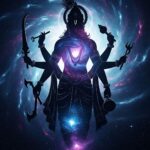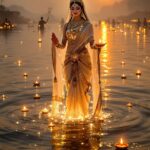7 Powerful Facts About Goddess Durga That Will Inspire You
Goddess Durga, one of the most revered deities in Hinduism, embodies strength, courage, protection, and divine energy. Celebrated for defeating evil and restoring righteousness, she inspires millions to overcome challenges, embrace bravery, and live with integrity. In this article, we explore the history, facts, timeline, significance, FAQs, daily life impact, and societal importance of Goddess Durga in a human-friendly and detailed manner.
History of Goddess Durga
The worship of Goddess Durga has deep roots in Indian spiritual and cultural history:
Vedic Period (c. 1500–500 BCE): Early references to powerful female deities can be found in the Vedas, including the conceptualization of Shakti, or divine feminine energy.
Devi Mahatmya (c. 5th–6th Century CE): One of the earliest texts glorifying Durga, it narrates the story of her victory over the demon Mahishasura, establishing her as the supreme protector of the universe.
Medieval Period: Temples dedicated to Durga flourished across India, particularly in Bengal, Assam, Odisha, and Gujarat, reinforcing community worship and cultural traditions.
Modern Era: Durga Puja, especially in Bengal, is celebrated as a major cultural festival, combining devotion, art, and social engagement.
Interesting Facts About Goddess Durga
Symbol of Shakti: Durga represents the feminine energy that sustains the universe, empowering both men and women to overcome challenges.
Multiple Arms: Depicted with 8–10 arms, each holding a weapon, symbolizing her omnipotence and readiness to combat evil.
Vehicle – The Lion: Her lion represents courage and strength, showing that fear can be conquered with determination.
Durga and Mahishasura: The battle symbolizes the triumph of good over evil, a lesson for ethical living.
Nine Forms – Navadurga: During Navratri, devotees worship nine aspects of Durga, each representing unique qualities like knowledge, wealth, courage, and compassion.
Durga Puja as a Cultural Festival: Beyond devotion, it unites communities through art, music, rituals, and social gatherings.
Global Recognition: Durga is revered worldwide, inspiring women’s empowerment, art, and spiritual practice.
Timeline of Goddess Durga Worship
1500–500 BCE: Concept of Shakti and powerful goddesses appear in Vedic texts.
5th–6th Century CE: Composition of Devi Mahatmya, detailing Durga’s victory over Mahishasura.
Medieval Era: Temples and sculptures dedicated to Durga appear across India.
18th–19th Century: Expansion of Durga Puja traditions, particularly in Bengal.
Modern Era: Global celebration of Durga Puja, integrating devotion, art, and social unity.
Significance of Goddess Durga
Goddess Durga carries spiritual, moral, and social significance:
Empowerment: Represents strength, courage, and resilience, especially for women.
Moral Guidance: Her stories teach righteousness, bravery, and ethical conduct.
Spiritual Symbolism: Symbolizes the victory of divine power over evil forces.
Cultural Impact: Integral to festivals, temple traditions, and regional arts.
Personal Inspiration: Encourages individuals to face challenges, overcome fear, and act ethically.
Community Unity: Durga Puja brings people together, promoting social harmony and collective joy.
Global Influence: Inspires yoga, meditation, art, and feminist movements worldwide.
FAQs About Goddess Durga
Q1: Who is Goddess Durga?
A1: Durga is the warrior goddess of protection and divine feminine power, celebrated for defeating Mahishasura and restoring righteousness.
Q2: What is the meaning of Durga’s many arms?
A2: Each arm holds a weapon or symbol representing her ability to fight evil and protect devotees in multiple ways.
Q3: What is the significance of Durga Puja?
A3: Durga Puja celebrates her victory over evil, promotes cultural engagement, and inspires personal and societal strength.
Q4: What are Navadurga?
A4: Navadurga are nine forms of Durga, each representing a different aspect of divine energy and virtue, worshiped during Navratri.
Q5: How can worshiping Durga impact daily life?
A5: It encourages courage, ethical behavior, spiritual growth, and social harmony.
Impact on Daily Life
Goddess Durga’s influence extends beyond spiritual devotion to personal development and societal well-being:
Courage and Resilience: Stories of her battles inspire individuals to face challenges fearlessly.
Ethical Decision-Making: Teachings promote righteousness, honesty, and moral integrity.
Mental Strength: Meditating on Durga fosters inner calm, focus, and confidence.
Social Unity: Community celebrations like Durga Puja strengthen social bonds and collective joy.
Cultural Engagement: Encourages participation in arts, dance, music, and literature reflecting devotion and heritage.
Observance and Wishing
Goddess Durga is celebrated with devotion, rituals, and community engagement:
Durga Puja: Major festival lasting five to ten days, especially in Bengal, Assam, and Odisha.
Navratri: Nine nights dedicated to Navadurga, focusing on fasting, prayer, and spiritual reflection.
Wishing: Devotees seek blessings for strength, protection, courage, and ethical guidance.
Community Rituals: Involve cultural programs, charity, and collective prayers, promoting societal harmony.
Conclusion: Why Goddess Durga Matters
Goddess Durga is more than a deity; she is a symbol of courage, protection, and divine feminine power. Her worship inspires individuals to overcome fear, act ethically, and embrace spiritual growth. On a societal level, Durga Puja and related rituals strengthen community bonds, cultural heritage, and moral values.
By understanding and celebrating Goddess Durga, individuals can cultivate resilience, courage, and devotion, while communities benefit from unity, social engagement, and shared cultural pride. Her stories remind us that righteousness, courage, and divine energy are always accessible to those who seek them.
Quick Recap: 7 Powerful Facts About Goddess Durga
Symbol of Shakti, the divine feminine energy.
Depicted with multiple arms, each holding a weapon.
Rides a lion, symbolizing courage.
Defeated Mahishasura, symbolizing triumph over evil.
Worshiped in nine forms during Navratri.
Celebrated in Durga Puja, uniting communities.
Inspires global devotion, empowerment, and cultural engagement.
Durga
| Characteristics : | Strength, Morality, Power, Protector |
| Other Names : | Jagdamba, Shakti, Bhagwati, Devi, Maa |
| Weapon : | Trident, Chakra, Snake, Conch shell, Mace, Bow, Long sword, Thunderbolt |
| Abode : | Trikoota Mountain |
| Vehicle (Vahana) : | Lion |
| Mula Mantra : | Om Sri Durgaya Namah |
| Durga Gayatri Mantra: | Aum Girijaye Cha Vidmahe Shiva Priyaye Cha Dheemahi Tanno Durga Prachodayat |








